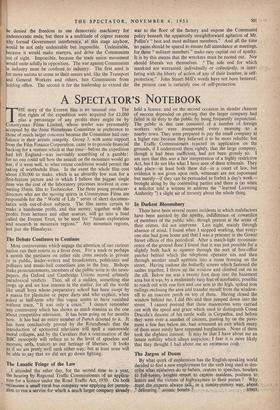A SPECTATOR'S NOTEBOOK
THE story of the Everest film is an unusual one. The film rights of the expedition were acquired for £1,000 plus a percentage of any profits there might . be by Countryman Films Limited, whose tender was presumably accepted by the Joint Himalayan Committee in preference to those of much larger concerns because the Committee had con- fidence in their artistic integrity. Group 3, with some support from the Film Finance Corporation, came in to provide financial backing for a venture which at that time—before the expedition had left England—was inevitably something of a gamble: for no one could tell how the assault on the mountain would go nor, if it went well, to what extent conditions would permit the taking of worthwhile films. In the event the whole film cost about £30,000 to make, which is an absurdly low sum for a first-feature picture and in which I believe the biggest single item was the cost of the laboratory processes involved in con- verting 35mm. film to Technicolor. The three young producer- directors who are the moving spirits in Countryman Films are responsible for the " World of Life " series of short documen- taries with out-of-door subjects. The film seems certain, to make a handsome profit, and this money, together with the profits from lectures and other sources, will go into a fund called the Everest Trust, to be used for " future exploration and research in mountain regions." Any mountain regions, not just the Himalayas.


































 Previous page
Previous page